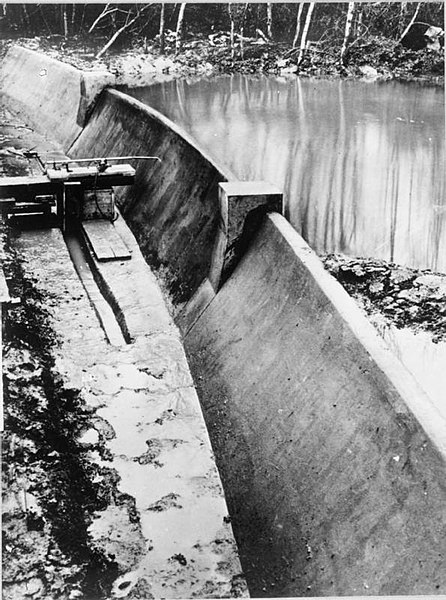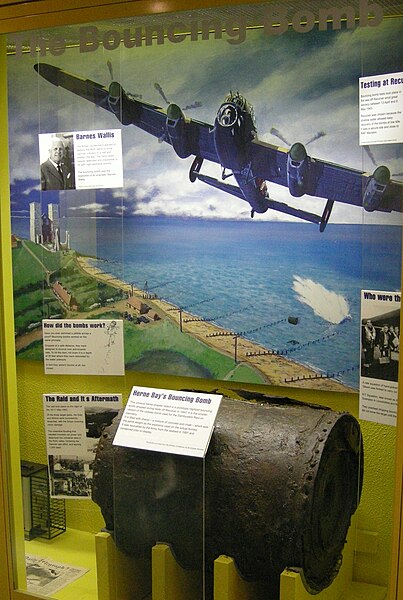Sir William Henry Glanville CB CBE FRS was a British civil engineer. During World War II he and the Road Research Laboratory were involved in important war work, developing temporary runways, beach analysis, and tank and aircraft design. He also worked on the explosives calculations and scale models used to develop the bouncing bombs used in the Dam Busters Raid.
The BRS facility at Garston
1:50 scale model of the Moehne Dam constructed at Garston to test the Operation Chastise explosives
The RRL's facility at Crowthorne, photographed in 1975
A bouncing bomb is a bomb designed to bounce to a target across water in a calculated manner to avoid obstacles such as torpedo nets, and to allow both the bomb's speed on arrival at the target and the timing of its detonation to be pre-determined, in a similar fashion to a regular naval depth charge. The inventor of the first such bomb was the British engineer Barnes Wallis, whose "Upkeep" bouncing bomb was used in the RAF's Operation Chastise of May 1943 to bounce into German dams and explode underwater, with an effect similar to the underground detonation of the later Grand Slam and Tallboy earthquake bombs, both of which he also invented.
"Upkeep" bouncing bomb at the Imperial War Museum Duxford
Remains of a Highball test prototype recovered from Reculver in 1997, now at Herne Bay Museum
The Möhne dam breached by Upkeep bombs
Highball bouncing bomb prototype, now on display at Abbotsbury Swannery in Dorset







